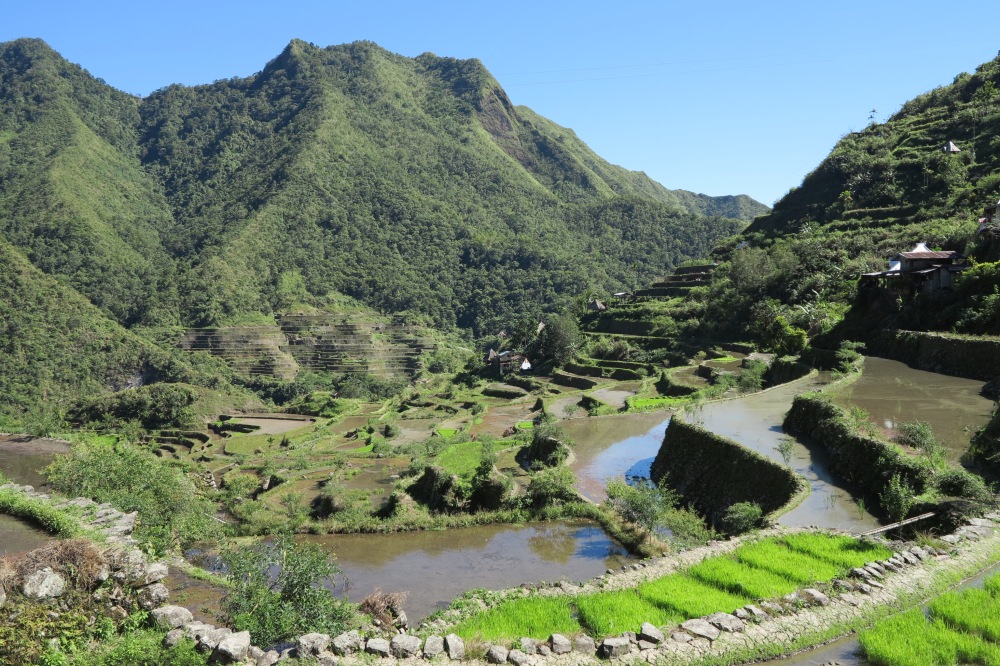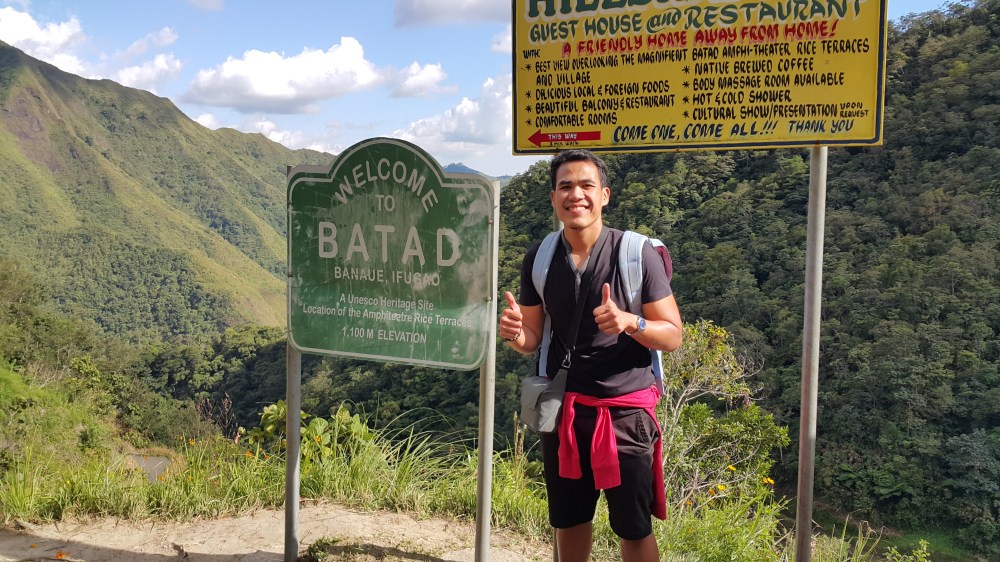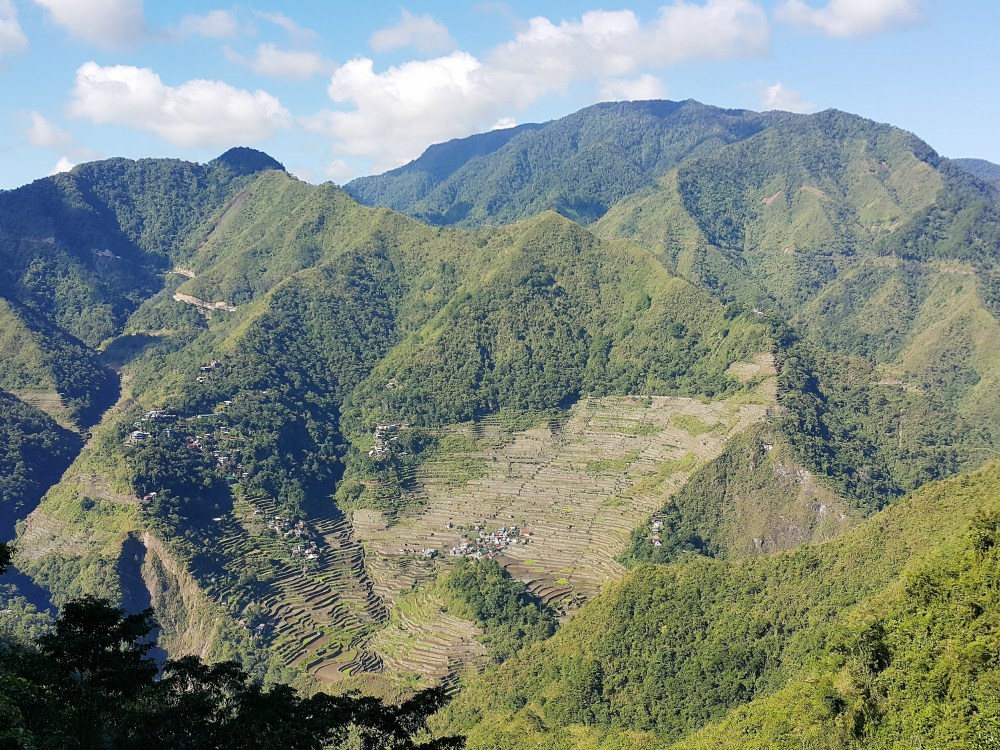
To those who are planning to travel and take a real fresh air from the hustle and bustle of the metro, why not go to Batad and be awed by its wonders?
It was December 2015 when I began looking for a travel destination where I could go to since I have free days after Christmas and before the New Year. I really wanted to go to Sagada, but since I have inquired fairly late about the cottages and homestays there (they were all fully booked), I opted to go to another place. I searched for possible destinations I could go to then I stumbled upon Batad.
Where is Batad?
Batad is one of the 18 barangays in the municipality of Banaue in the Cordillera province of Ifugao, Philippines. It is home to the amphitheater-like Batad Rice Terraces, which is one of the five clusters of rice terraces in Ifugao that are inscribed in the United Nations Educational, Scientific and Cultural Organization’s (UNESCO’s) World Heritage Sites. This is a testament that these rice terraces represent a masterpiece of human creative genius and cultural significance as shown by the Ifugao tribe. The Batad Rice terraces were said to be built for about 2,000 years ago, and even though they were already built for quite a long time, its complex stone and mud walls coupled with intricate irrigation systems (as they harvest water from the forests of the mountain tops) and elaborate farming system are still used.

Said to be the most beautiful among the five, the Batad Rice Terraces differ in color as the year goes by. Our very helpful and amazing tour guide, Vincent, said that during this time of the year, the terraces look as what it really looks like: brown with a little bit of green because it’s clearing time of the crops and the land. (Side note: The crops in Batad are said to be only harvested once a year.) During the summer months, he continued, the terraces are in full green. I guess the scenery during this time is what most of us, Filipinos, are inclined to see in our books, magazines and postcards. He said that the best time, though, to go there is during the months of August and September, when the terraces are in their golden color.
Exploring Batad Itinerary
This is an itinerary for about 3 days including travel time:
DAY 1
9 PM – Meet up at Ohayami Bus Station (found near University of Sto. Tomas along Lacson Avenue). Fare is P450 of bus routed to Banaue.
10 PM – Departure time.
DAY 2
7 AM – Expected time of arrival in Banaue. Eat breakfast. After breakfast, ride a tricycle to take you to Saddle Point.
8 AM – Saddle Point (the last place before going to Batad where you can access the whole wide world with your phone)

9 or 10 AM – Depending on the time the vehicles (such as jeep) going to Batad will arrive as well as the speed rate of your walk that would take you from the last point a vehicle is allowed up to the main barangay of Batad.
What to explore in Batad?
It seems like anywhere in the village is a good place to look at the beautiful terraces, but the best spot to marvel and just awe at the grand scenery is Awwa’s View Point (pronounced as Agwa, which was how one of the local tour guides said it), the highest place on the mountain of Batad. Aside from the terraces, Batad also boasts a hidden gem with its Tappiya Falls, requiring about an hour or less of trekking. I am very thankful we have succesfully made it to go to these two places, where stunning scenery could be seen.

- Awwa View Deck
- Said to be the highest point of Batad, the Awa View Deck is where a great view of the whole amphitheater-like terraces can be seen.

A visitor was seen marveling at the awesome Tappiya Falls 2. Tappiya Falls
- A magnificent 70-meter waterfalls that can be reached after walking for about 30 minutes to one hour.
Where to stay?
We stayed in Ramon’s Native Homestay. The place provides rooms with comfortable beds, has shared bathrooms (the coldest bath I had so far was here, haha), offers food and drinks with reasonably more expensive prices (its restaurant has an amazing view of the terraces), has costumes of locals that you can wear for free (though you are encouraged to give donations), has bonfire at night (socials).
Who to contact?
We contacted Vince Lopez to tour us around Batad. His contact number is 09364778620. Our arrangement was he would fetch us in Banaue Market Place, contact a tricycle driver to ride us towards Saddle Point then to Batad (and back the following day). He assisted us in locating Mang Ramon’s Homestay and he also served as our tour guide towards Tappiya Falls and Awa View Deck.
DAY 3
We were about to leave Ramon’s Native Homestay, when the place’s gracious owner, Mang Ramon, encouraged us to try and wear Ifugao’s native costume consisting of bahag, necklace and headdress (for male). The one I’m wearing here in this picture is said to be worn by the native chieftain, which also used the weapon I am holding. If you were to ask me years ago if I’d ever do this, I would certainly not. But because I have very much enjoyed Batad’s unparalleled beauty even if it required long walks and hours of going up and down mountain sides, I wanted to try this, too, to complete my Ifugao experience. And so I did!

1 PM- We left Batad. Oh, how I would miss this place!
4 PM – Back to Banawe. We ate late lunch then scoured the market to buy goods and pasalubong. If you still have time, you can explore more of the place.
6 PM – Expected time of departure (ETD) from Banawe. We again rode a bus in Ohayami Bus Terminal (It would be better to book both tickets going to Batad and going back to Manila when you first contact Ohayami. By doing so, you are already assured of your bus seats. Just make sure to know the schedule of their departure from the bus station.)
DAY 4
4 AM – Expected time of arrival (ETA) in Manila (Ohayami Bus Station in Lacson Avenue, Manila)
| List of Expenses | |
| P450 | Bus fare from Manila to Banaue |
| P150 | Tricycle from Banaue Market Place to Saddle Point |
| P1200 | Tour guide for 2 days |
| P350 | Overnight stay in Ramon’s Native Homestay |
| P450 | Bus fare from Banaue to Manila |
| P500+ | Food (we did bring our own baon but there were times we bought rice and meals in Mang Ramon’s restaurant) |
| P500 | Pasalubong, Souvenirs, etc. |
| TOTAL: ~P3600 | |
Have you been to Batad, guys? If not, I hope this blog post helps! Don’t hesitate to ask or comment below if you have any questions. 🙂